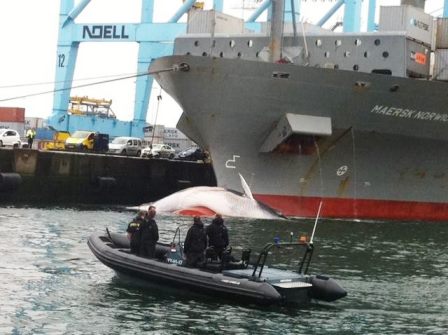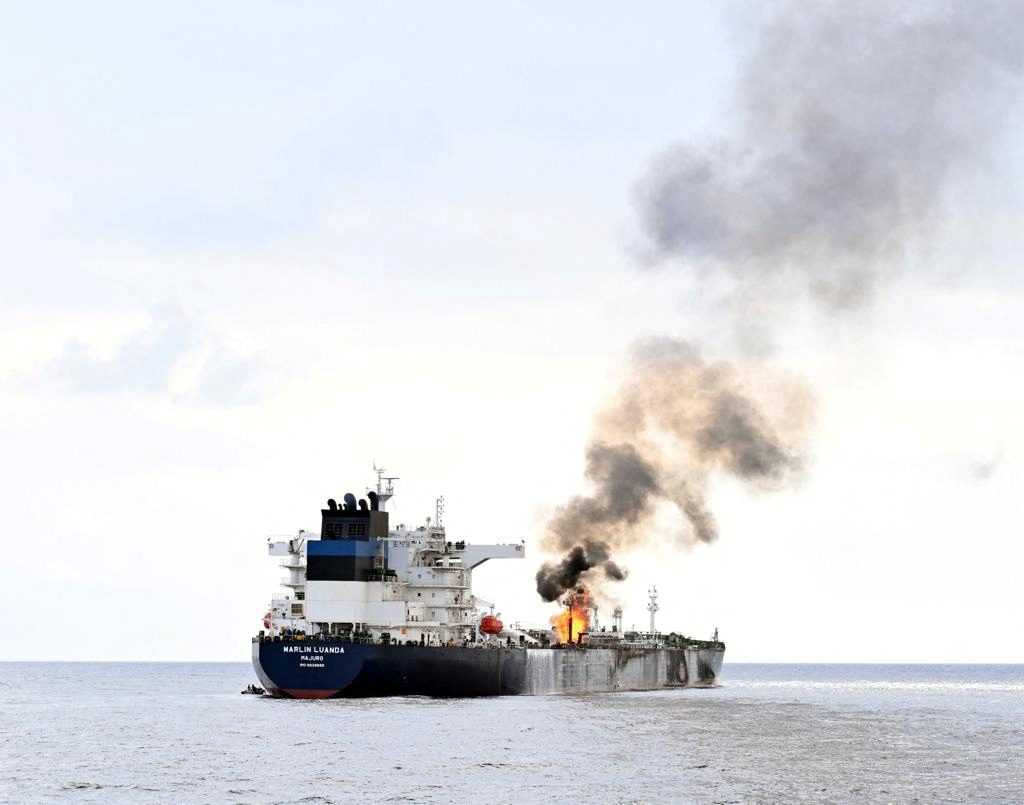Image: Maersk, click for larger
By Hursh Joshi, MaerskLineSocial
Maersk Line does everything it can to avoid creating a negative impact on the marine environment. Despite these efforts on Wednesday 6 June we saw images of a 12 metre long whale caught on the bulbous bow of the Maersk Norwich. This image, of a noble and elegant creature accidentally struck down by a Maersk Line vessel deeply affected us all.
Below are some of the questions we were asking ourselves in Maersk Line:
What happened after the whale arrived in port?
When the ship arrived in the Port of Rotterdam, the Port Authorities called a zoologist to examine the whale. According to our information from the port, the whale was most likely dead when hit by the ship. The whale has been sent for destruction by the zoologist.
What do we do in general to avoid striking whales?
Maersk Line watches from the bridge for marine mammals as well as vessels, and we participate fully in measures designed to reduce the probability and severity of ship strikes.
In the US, we slow to less than 10 knots in designated zones, as defined by National Oceanic and Atmospheric Administration (NOAA), and have worked with World Shipping Council (WSC) and NOAA to have radar speed data provided to each shipping line to prevent these incidents from occurring.
We are working to better understand the science related to whale behaviours and how to reduce the probability of hitting marine mammals. We are members of the World Ocean Council and continue to meet with NOAA and others concerned with marine mammals.
Does the fact that we are slow steaming make a difference?
Yes, it does. According to NOAA slower speeds reduce likelihood of injury or fatality when a strike does occur.
What are the regulations on this, and does Maersk Line comply with them?
The NOAA fact sheet on the US speed reduction zones states – and we comply with it – that vessels are to travel at less than 10 knots in designated areas, which cover almost all Atlantic ports from November to April each year. There are also dynamic voluntary speed reduction areas – alerts to vessels when groups of whales are spotted in a particular location.
At Maersk Line, we track vessel speed compliance extra carefully during the seasons when whales are likely to be present.
How does Maersk Line protect the oceans, wildlife & biodiversity? What’s your sustainability strategy on this area?
Maersk has long been an environmental leader in the shipping industry. As such, we fully support the Final Environmental Impact Statement (FEIS) on “Right Whale Ship Strike Reduction” as we wish to help this endangered species repopulate the oceans.
Maersk Line and Maersk Line Ltd. are members of the World Shipping Council (WSC) and have worked closely with WSC throughout the development of the FEIS and proposed rules. We have openly shared our experiences with both WSC and with NOAA, including providing an experienced ship’s captain to consult with both WSC and NOAA on this issue.
This article was initially published as a note on Facebook, on Friday, 8 June 2012. You can view the note (and the comments) here.
Unlock Exclusive Insights Today!
Join the gCaptain Club for curated content, insider opinions, and vibrant community discussions.

 Join The Club
Join The Club













